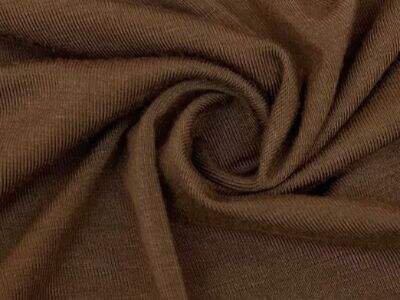Woven fabrics are super duper cool. These are special, knotted threads woven together in some magical way. This method produces tough and resilient substances that we use for much other purpose, i.e. preparing from clothing, curtains, bed sheets, etc. There are different types of woven material, and each type has a specific aesthetic and characteristics that make it distinct. At Bornature, we think it is critical to understand these differences to assist you in picking the right fabric for your purposes and what you would like to create.
Weaving Methods and Its Effect On The Texture Of The Fabric
Woven means that we take threads and cross them in one another to create fabric. Weaving is divided into two main categories: the plain weave and the twill weave.
Plain weave means that one thread goes over and under another thread in a simple pattern. This process produces brightly woven yet lightweight, breathable fabrics. As a result, plain weave fabrics are typically quite comfortable to wear and have a nice hand feel against the skin. Cotton, linen, and silk are common examples of fabrics with a plain weave. These substances are generally very soft and able to be maintained, which explains their commonality in clothing and household items.
Twill weave: Similarly, twill weave fabrics are distinct from regular plain weave fabrics due to their unique diagonal pattern. The diagonal pattern is formed by crossing the threads over and under each other in a way that appears diagonal. Twill weave fabric comes in a variety of weights, from lightweight to heavier weights and is very strong making them a great choice for items needing to be tough and durable. And that’s the reason that you see twill weave in products such as upholstery fabrics for furniture quite often. Wool and denim are examples of fabrics using a twill weave, both very useful to make durable clothing that will last for a long time.
Characteristics of Various Types of Woven Fabrics
Each woven fabric has its own unique characteristics. Take a closer look into some of the most common woven fabrics and what makes them unique:
Cotton: Cotton is a well-known fabric which is soft and breathable as well as absorbent. It is not only a versatile fabric, but also relatively cheap and thus ideal for clothing such as t-shirts, dresses and bed sheets. Cotton is a natural comfortable fabric that felt good against the skin.
Linen: Another great fabric is linen. It is quite strong and durable, so it can last for a long time. It has a different texture than most fabrics and is therefore very suitable as fabric for, for example, curtains, tablecloths and summer clothing. Linen is very often selected to be cool on hot days.
Wool: A special type of fabric that keeps you warm and cozy. It is also water-resistant, making it ideal for winter apparel and jackets. Wool is commonly employed in the production of sweaters, scarves, and coats as it is in fact an exceptional insulator against the cold.
Silk — Silk is a smooth and soft feeling fabric. It’s also highly breathable, so it will help keep you comfortable in various temperatures. That makes silk well-suited for formal gowns and eveningwear, as well as high-quality bedding that is delightful to sleep on.
Nylon: Nylon is a very strong yet lightweight fabric. Another reason why nylon is a popular fabric choice is its resistance to both wear and tear, which makes it ideal for athletic wear and outdoor apparel. Nylon can handle a lot of activity, so many people select it for jackets and sporting equipment.
How Fiber Type Impacts Woven Textiles
The type of fiber used in the fabric has an enormous influence on several of its characteristics. Cotton, for example, has relatively short fibers and produces a fluffy, soft fabric. This is one reason cotton feels so nice against our skin. Wool fibers, on the other hand, are long and create a fabric that is hardy and durable. This is a good thing, especially for things such as warm sweaters and coats.
Why Yarn Size and Thread Count Are Important
Thread count and yarn size make a difference in how a fabric feels and if it's any good when it comes to woven fabrics.
Thread count: The number of threads in one square inch of fabric. Most of the time, higher thread counts translate to a softer, smoother fabric, which is nice next to skin when you’re wearing it, or in your home when you’re using it.
Yarn size: Yarn size, also known as denier, indicates the thickness of a single strand of yarn. Thick yarns make fatter, tougher fabrics that can take a beating. Fat, fluffy yarns create heavier, bulkier fabrics better suited for vessels like chunky sweaters and cardigans, while thinner yarns yield a softer and lighter fabric best for summer garments and event-specific pieces.

 EN
EN







































